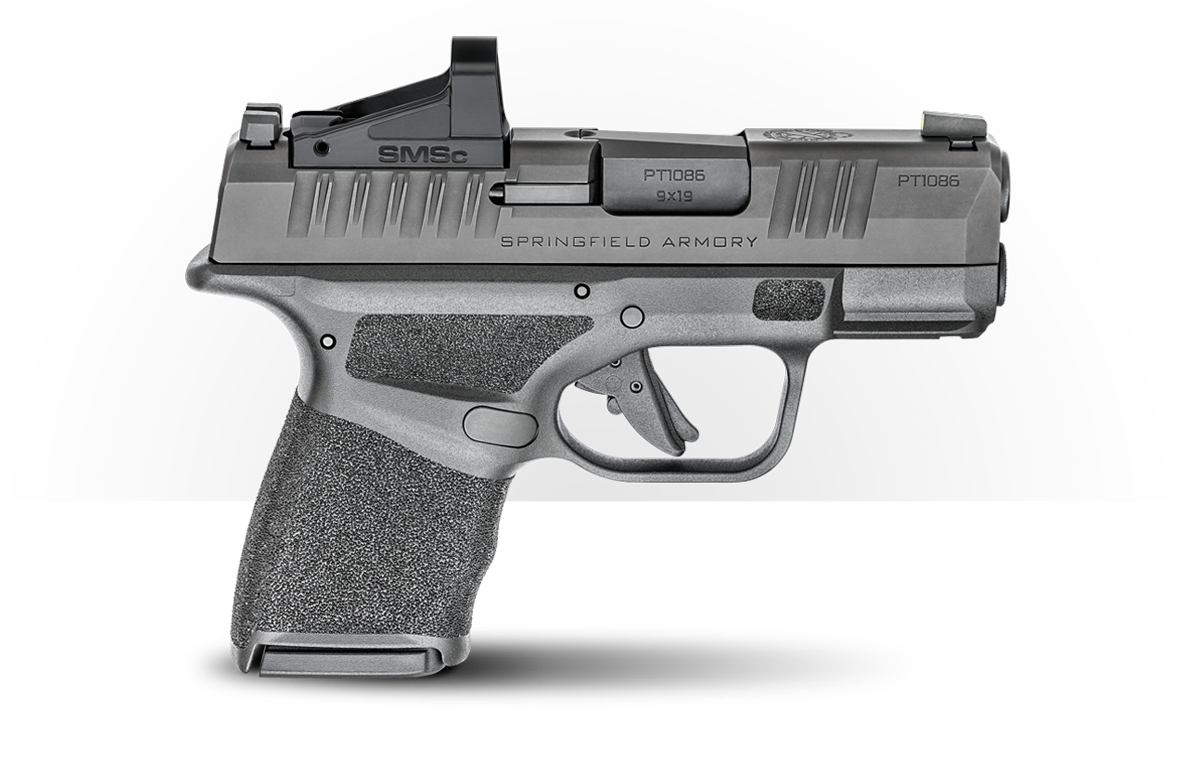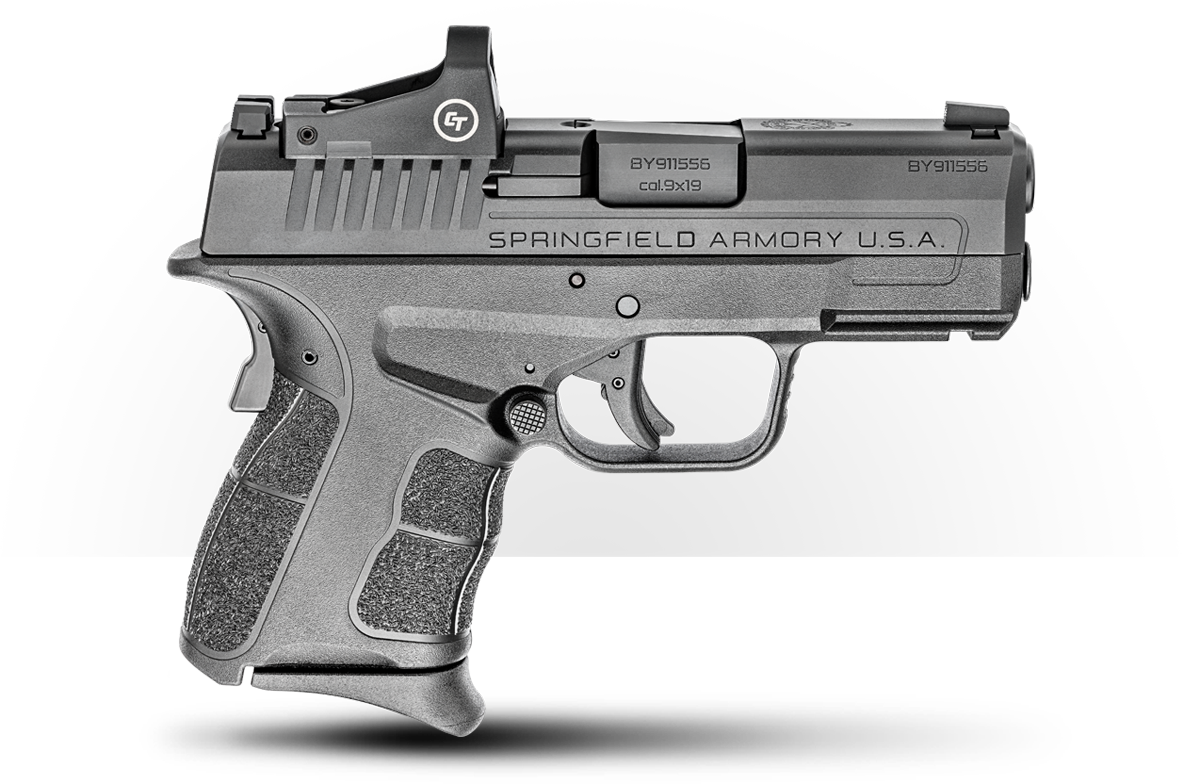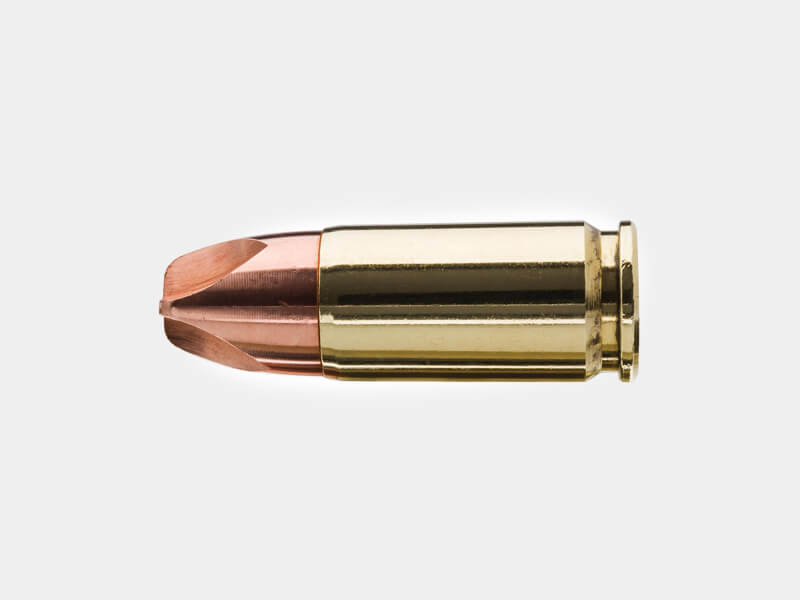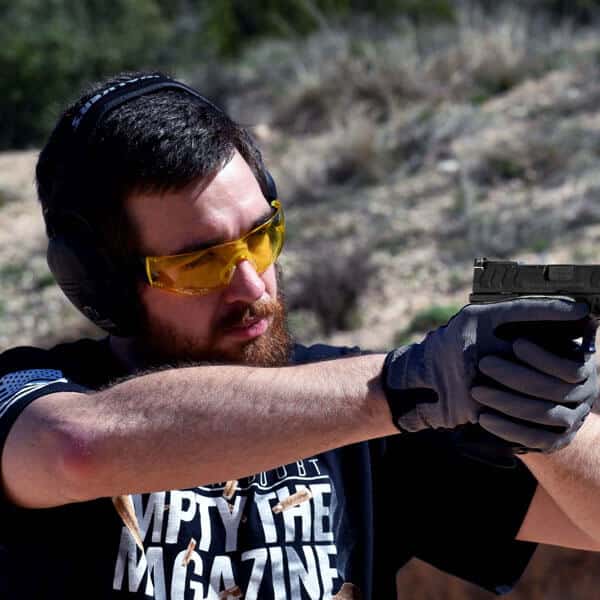Irons vs. Optics for CCW: Which Should I Use?
January 2nd, 2021
6 minute read
Iron sighted pistols have long been the norm. Only recently have manufacturers started making pistols that are optics-ready (to learn about the new optics-ready XD-S Mod.2 OSP, click here). Before, if you wanted to put an optic on your pistol you would have to replace your rear sights or have the pistol milled by a gunsmith, costing you a lot of money. Also, in the past optics were normally used on pistols in competition settings, but not on carry guns. The question is, which one should you choose when your life is on the line?
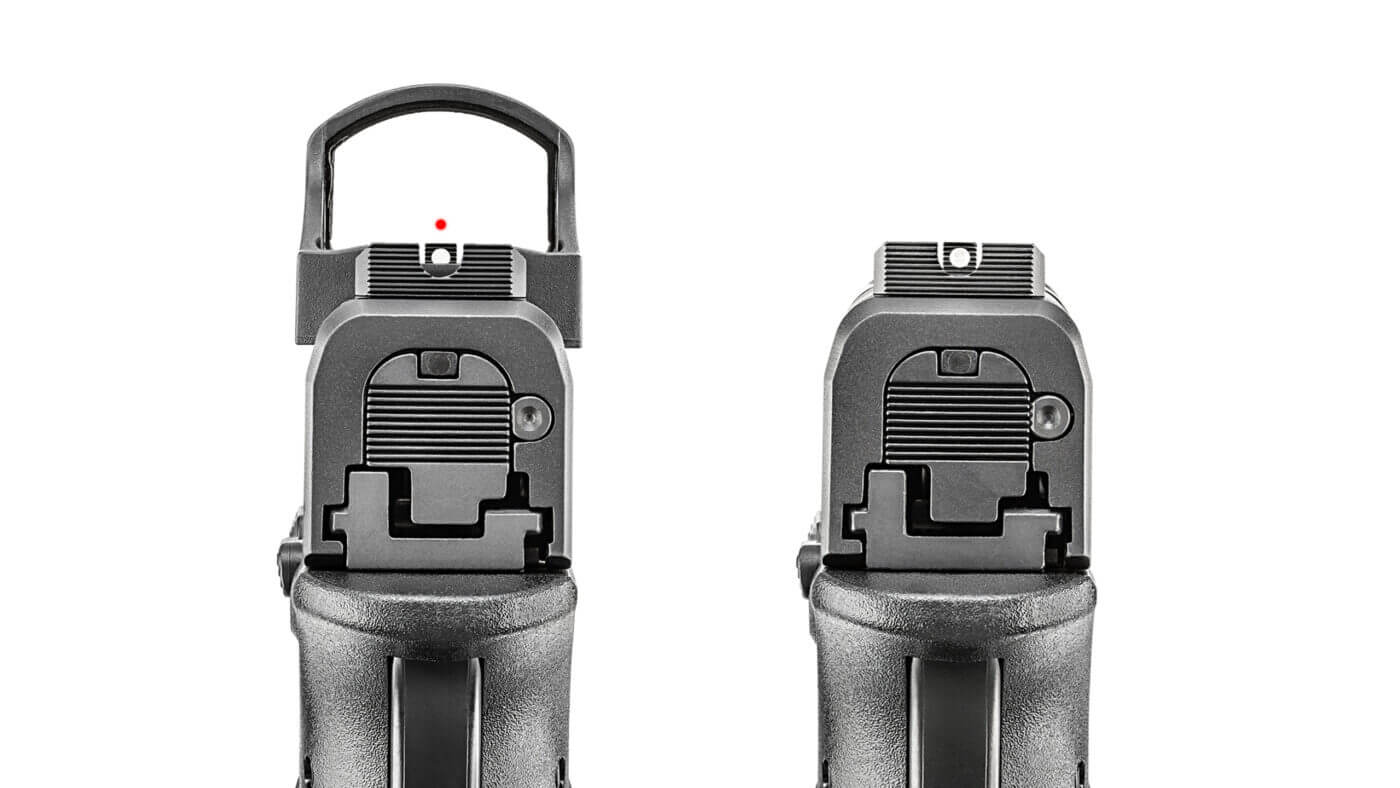
I wanted to test out the irons vs. optics theory on CCW pistols, so I put together an experiment with the following controls. I got five friends together. One is a competition shooter, one is ex-military, one an intermediate shooter, two are new shooters, and then me. We used two Hellcat OSPs — one with a Shield SMSc optic, and one without. The ammunition was Black Hills Ammunition 9mm 100-gr. HoneyBadger rounds.
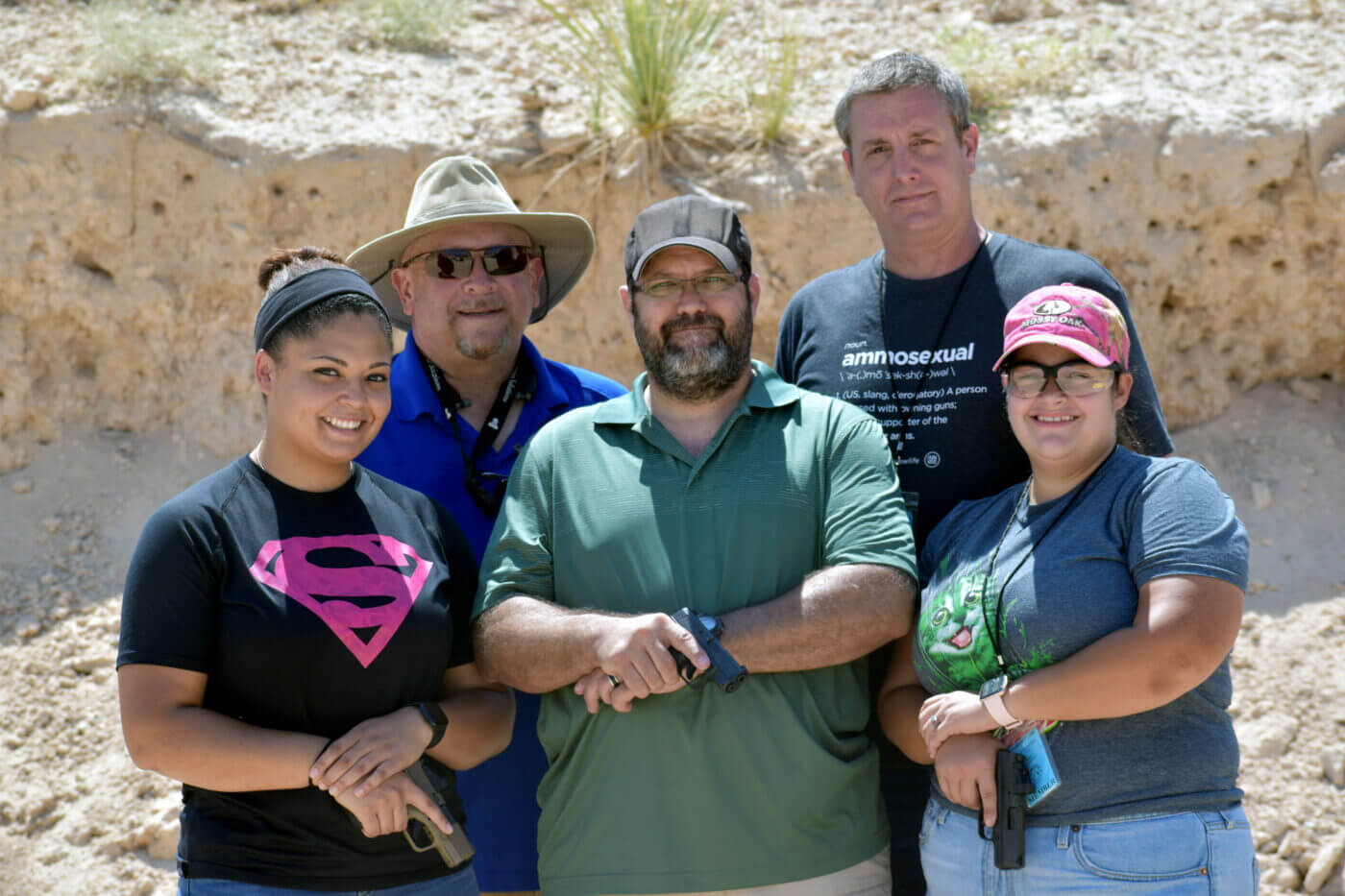
I set up a small metal silhouette target at 10 yards. We all did two drills with each gun — the holster draw drill and the surrender draw drill. Each person took three shots from the starting position of each drill at the target. Using a shot timer, each shooter would take aim and fire one shot at the target then return to the starting position and repeat three times. The time it took to get on target and fire one shot was then recorded, per person.
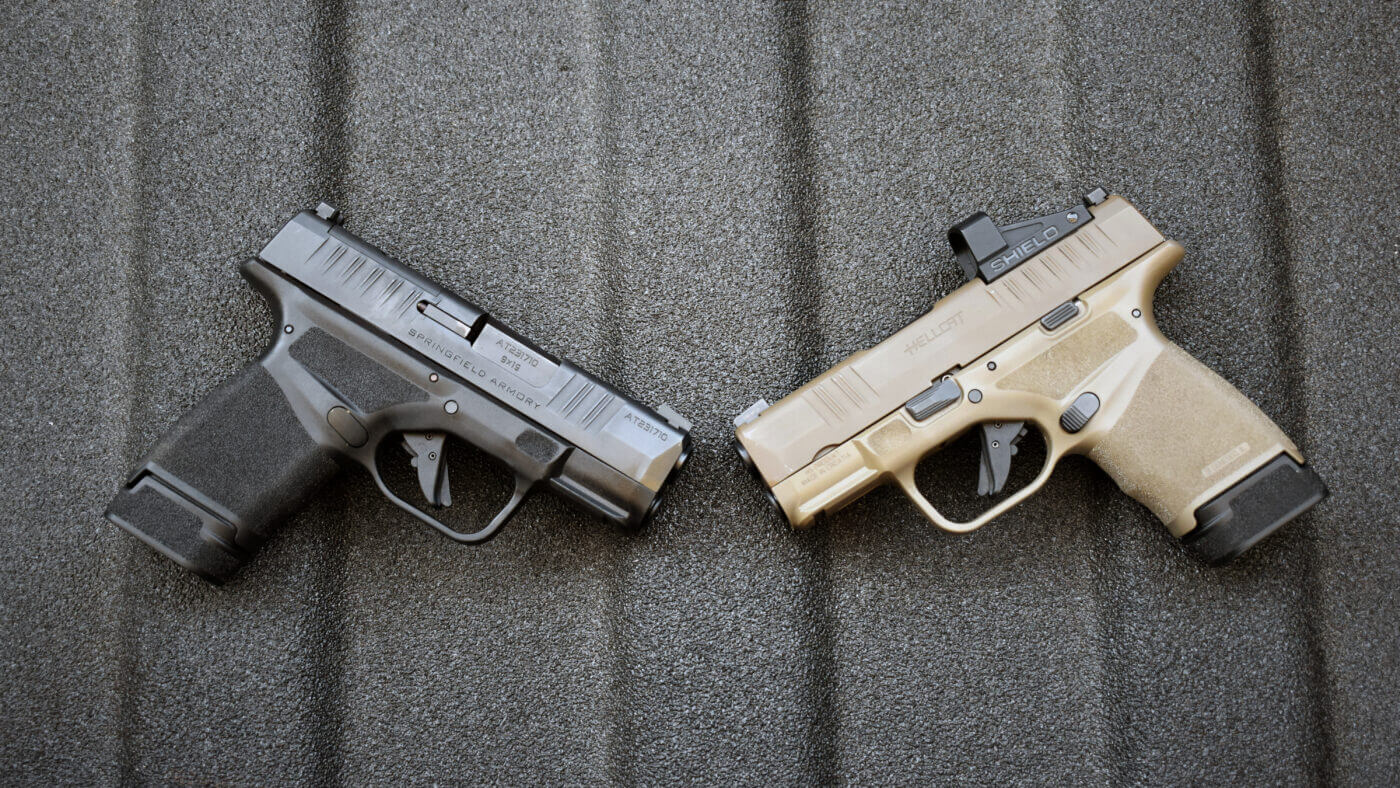
Holster Draw Drill
The holster draw drill is designed for your everyday carry lifestyle. I mean, think about it, no one walks around with a pistol in hand at their chest all day every day. So, this drill allows you to train for how you carry day-to-day when possibly faced with a deadly threat. First, get some distance, clear your firearm, draw your weapon, take aim, shoot the intended target and clear your area. This sounds like a lot to go through whenever faced with a deadly situation. When seconds matter you can’t afford to get it wrong.
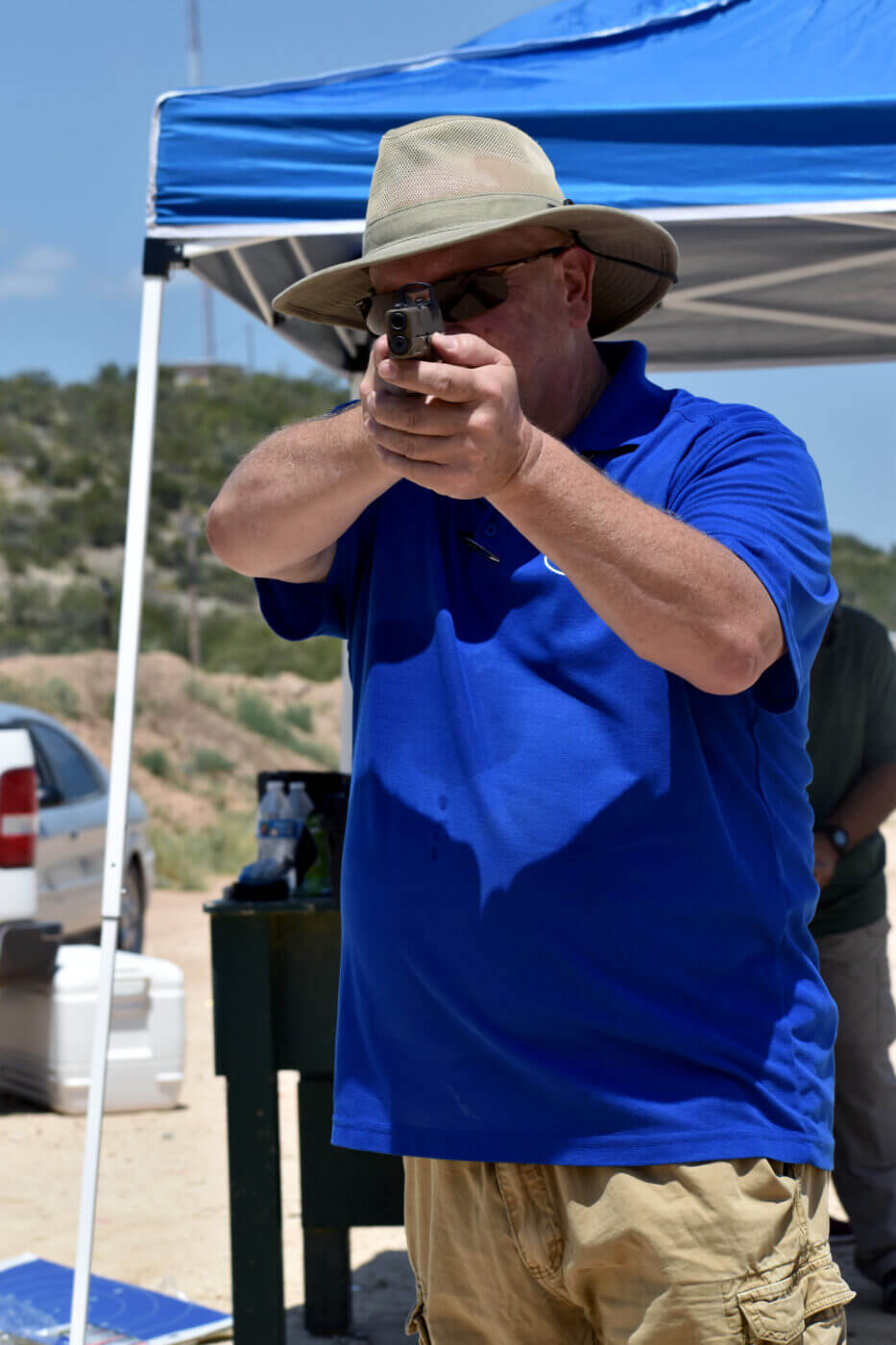
The holster draw drill is drawing from the holster as you would normally with your carry rig, taking aim, putting one shot accurately on target, and then going back to the holster. Being our least-experienced shooter, Racheal did remarkably well with the holster draw drill. With irons, she had the pistol with one shot on target in 3.17 seconds, accurately. This was followed up by 2.43 seconds and then 2.24 seconds. When she had the Hellcat with the Shield SMSc, her times were 3.69 seconds at first, followed up by an impressive 2.04 seconds and lastly a 1.91 second all accurate shots. At first, it was thought that the irons would be far easier for her, but she proved us all wrong at the end by having the best time of all the other shooters in this drill.
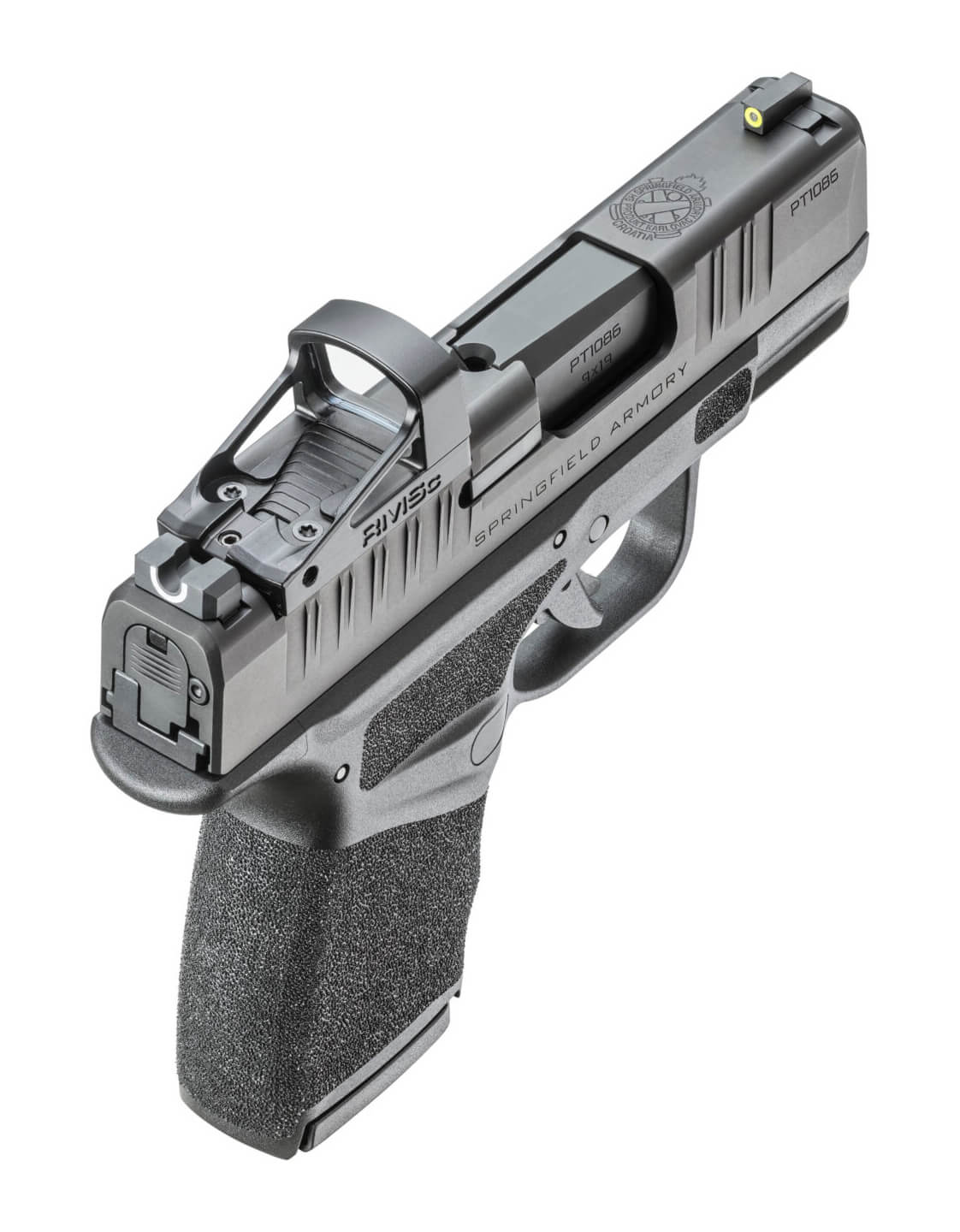
Shawn, our ex-military participant, kept fairly even timing across the board with irons and optics. His shots with the irons were starting at 2.24 seconds, followed by 2.05 seconds and lastly 2.17 seconds. With optics, he started out with an impressive 1.91 seconds making it seem he would blow us all out of the water thanks to his military background. He then followed up with the following times of 2.22 seconds and 2.13 seconds. Still keeping the optics pistol leading on the tally board.
Surrender Draw Drill
The surrender draw drill was designed for those last-ditch efforts when your life is on the line. Someone has a gun or a knife at your back, your hands are raised high and you have the feeling they are about to kill you. You drop your hands, clear your weapon, spin around, take aim and put a shot center mass. How long do you think that should take? Surprisingly not nearly as long as you might think.
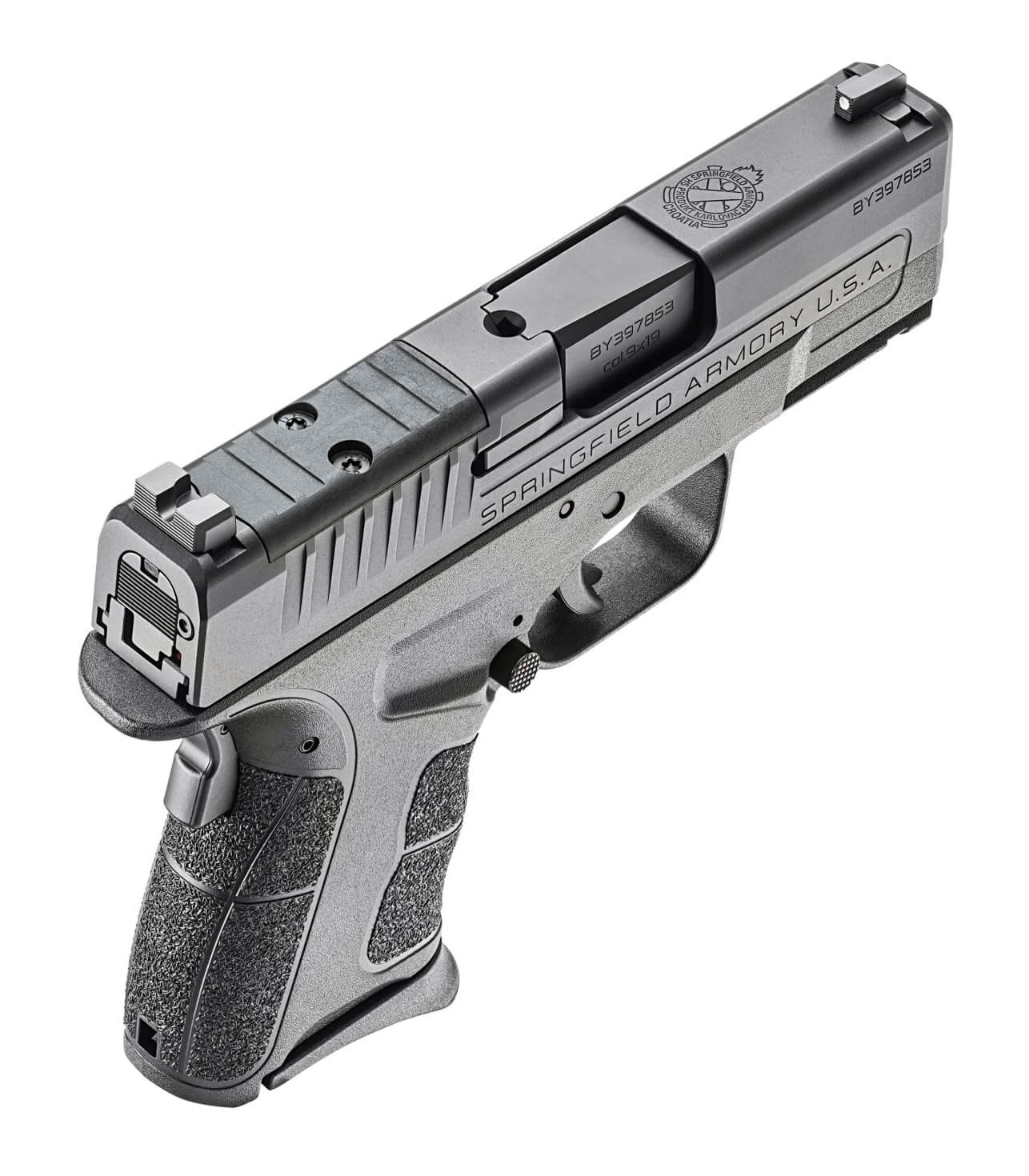
The surrender draw drill was put in to add stress to the situation starting with your back to the target and your hands raised in the air. At the sound of the shot timer, the shooter would have to turn around while drawing the pistol — all in one fluid motion — take aim and get an accurate shot on target. It’s no surprise that our competition shooter took the win in this drill.
Darren rocked the board with a 2.02 second shot on target. Not bad at all, he then shows up that shot with a 1.99 second shot and a 1.79 second shot using the iron-sighted pistol. Then, when given the Hellcat with the Shield, he does even better starting off with a 1.86 second, 1.79 second and a 1.56 second shot being the best shot of this drill.
Stephanie, who’s been around firearms for a couple years thanks to her husband, Jeremy, came out of the gates screaming on this one, giving everything she had to beat our competition shooter. Her first shot timed in at 1.98 seconds, followed up by 2.14 and lastly 2.08 using irons. Optics did give her a bit of a challenge here, but she overcame it. Her first shot using optics here was 3.64 seconds — still impressive considering the stress behind this drill. Her following shots were at 2.26 and lastly at 2.11 seconds. Good job, Stephanie.
Conclusion
What these tests showed me was two things. First, practice makes a world of difference because the shooters’ numbers kept dropping after every shot. I’m sure if we were still out there today, our numbers would be below a second on most of these drills. Secondly, with an optic on your pistol like the Shield SMSc, the shot times dropped by almost a tenth of a second on every drill with every person.
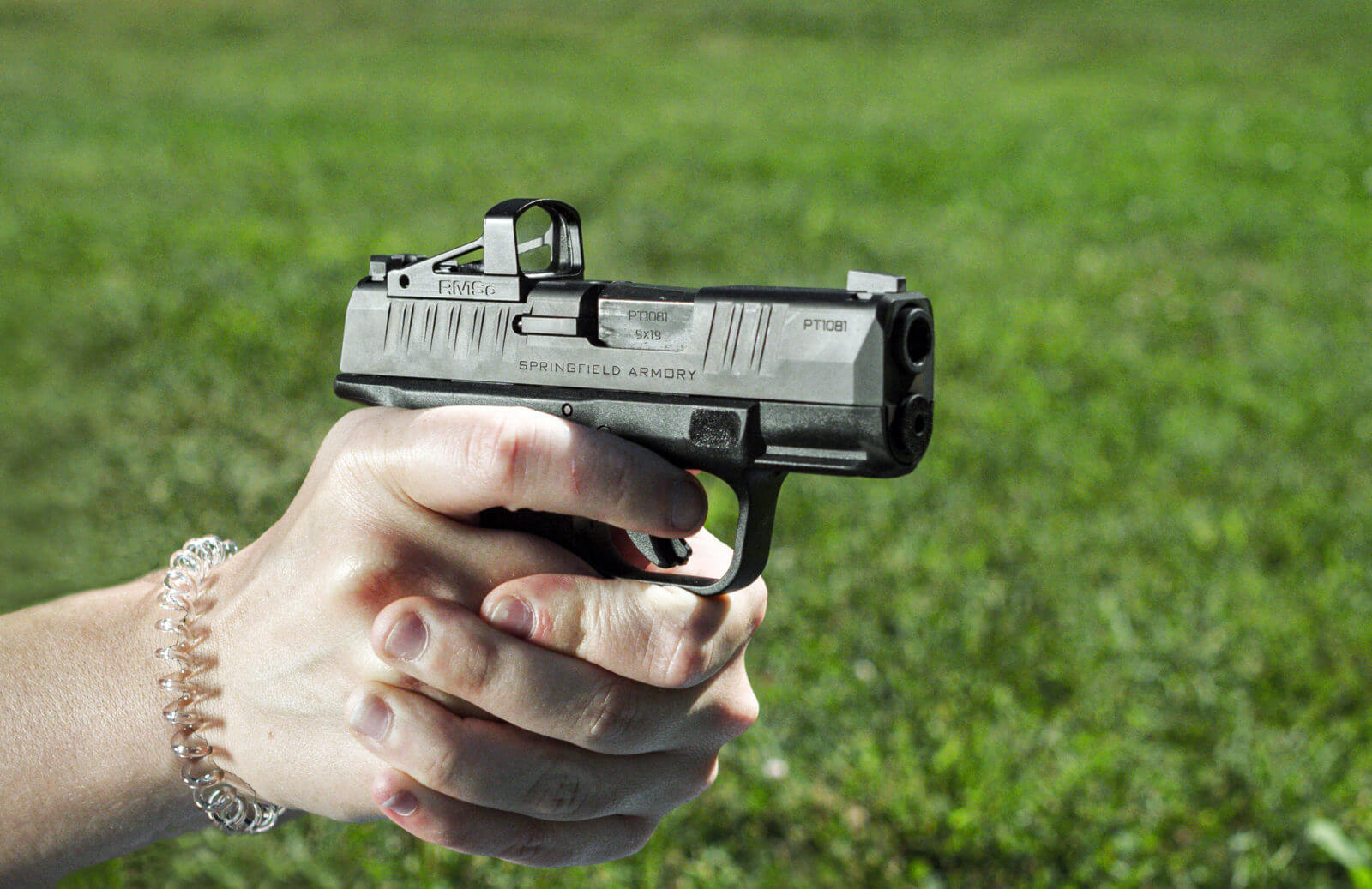
Considering that the average human response time is .4 seconds, every millisecond I can shave off of the time after that can make a huge difference. When seconds can mean the difference between life or death, you want the tools and equipment on your side for the better outcome.
And speaking of tools, having a well-made CCW pistol like the Hellcat OSP or XD-S Mod.2 OSP that comes from the factory cut to accept optics makes all of this all that much easier. And, with direct mouting of the optic to the slide, the optics on these pistols sit low enough to allow you to have your iron sights co-witness with the optic (to learn more about the excellent U-Dot iron sights of the Hellcat, click here), so you get the best of both worlds.
Either way, the key is to have a reliable, well-made firearm — whether it be iron-sighted or optic-equipped — and train with it. The better you are, the better your chances of surviving a deadly encounter. And with an optic-equipped pistol, you might just shave that fraction of a second off that makes all the difference!
Editor’s Note: Be sure to check out The Armory Life Forum, where you can comment about our daily articles, as well as just talk guns and gear. Click the “Go To Forum Thread” link below to jump in!
Join the Discussion
Featured in this article
Continue Reading
Did you enjoy this article?

 144
144




